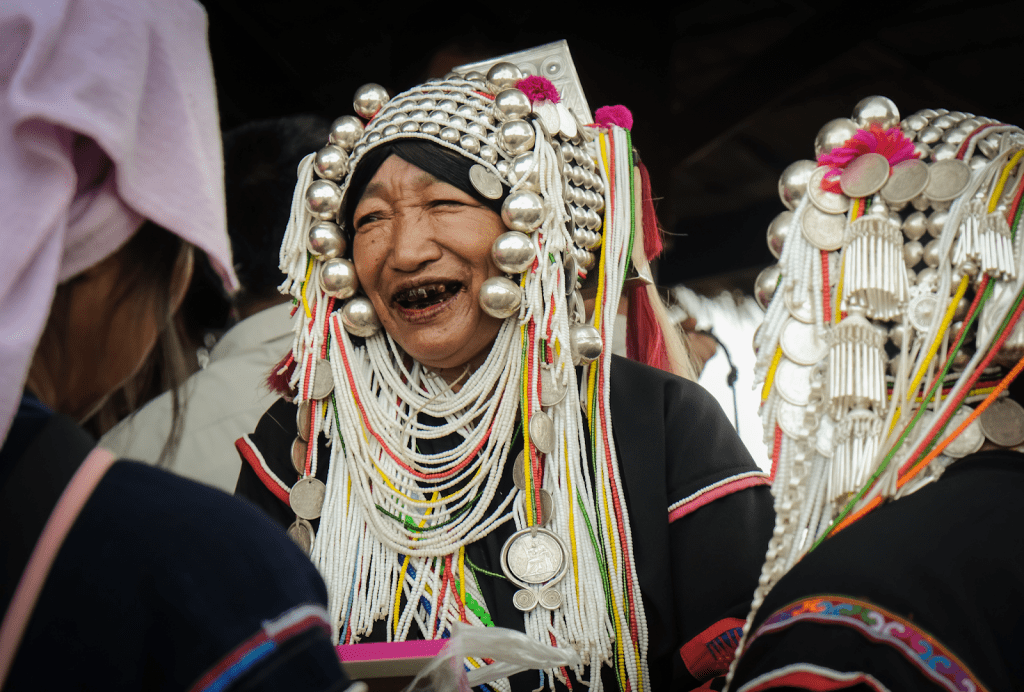Asia is a continent filled with diverse cultures, breathtaking landscapes and ancient traditions, offering travelers countless opportunities for discovery. However, if you’re truly looking to experience the heart of Asia, it’s time to go beyond the typical tourist attractions and embrace community-based tourism (CBT). This unique form of travel allows you to connect deeply with local communities, engage in authentic cultural experiences, and contribute to the preservation of heritage while supporting sustainable practices. In this guide, we’ll explore how community-based tourism offers a genuine, immersive way to experience Asia, from the rice terraces of Vietnam to the rural villages of Cambodia and beyond.

1. What is community-based tourism?
Community-based tourism is not just about visiting a destination; it’s about engaging with the people, the culture, and the environment in a way that benefits everyone involved. In CBT, local communities have an active role in tourism planning, ensuring that they receive the economic benefits while preserving their traditions and environment. This contrasts with mass tourism, where profits often flow outside of the local area and cultures may be exploited for commercial gain.
1.1 Key features of community-based tourism
- Local ownership and control: In CBT, local communities have ownership and control over tourism initiatives, ensuring that the profits benefit the people directly.
- Sustainability: CBT emphasizes environmentally responsible practices, such as minimizing waste, supporting eco-friendly accommodations, and promoting green travel options (according to UNWTO – Sustainable Tourism).
- Cultural immersion: Travelers have the opportunity to learn from local traditions, arts, crafts, and rituals, offering deeper insight into the local way of life.
- Economic benefits: By engaging in CBT, travelers help provide jobs, support local businesses, and contribute to the overall economic development of the community.
1.2 Social and environmental impact of CBT
One of the key advantages of community-based tourism is its positive impact on the local community and environment. From preserving ancient arts and traditions to supporting sustainable farming practices, CBT empowers local communities to maintain control over their cultural and environmental assets. Moreover, by fostering responsible tourism, CBT helps mitigate the negative effects of mass tourism, ensuring that natural landscapes and ecosystems are protected for future generations.
According to a report from the World Travel & Tourism Council (WTTC), sustainable tourism models like CBT are significantly more resilient during crises such as the COVID-19 pandemic and also help create long-term social benefits by ensuring the protection of the environment and cultural heritage.
2. Key Asian destinations for community-based tourism
Now you know about community-based tourism, so how can we explore Asia rich culture through CBT? Asia offers a rich array of community-based tourism opportunities, each providing travelers with a chance to connect with the unique cultures and traditions of the region. From the tranquil hills of Thailand to the vibrant villages of Cambodia, here are some of the top destinations for authentic cultural experiences in Asia:
2.1 Thailand: Immersing in Hill Tribe cultures
Northern Thailand is home to several indigenous hill tribes, each with their own distinct traditions and crafts. With community-based tourism initiatives, travelers can stay in local villages, participate in farming activities, and learn traditional crafts like weaving and pottery. The Karen Tribe in Chiang Mai offers cultural immersion tours where you can experience life as a local while learning about their ancient customs and practices.
Mango Tiger DMC offers Thailand tailor-made tours that take you into the heart of these communities, giving you an authentic, hands-on experience that few tourists get to experience.
2.2 Vietnam: Engaging with ethnic minorities in Sapa
In Vietnam, the Sapa region is famous for its stunning landscapes and ethnic minority groups. Visitors can stay with local families in Sapa homestays, trek through rice terraces, and learn about traditional agricultural practices. Mango Tiger DMC curates trips to these remote regions in Sapa, allowing travelers to explore the local culture, sample traditional food, and even participate in farming activities. This immersive experience not only supports local families but also helps preserve the region’s ancient customs.
2.3 Cambodia: Exploring the heart of rural villages
Cambodia’s community-based tourism focuses on helping rural communities near Angkor Wat by providing tourists with an authentic experience of daily life in the area. You can learn traditional Khmer crafts, take part in rice harvesting, or visit temples with local guides who share deep knowledge of their culture. These tours are not just about sightseeing but also about connecting with the people, learning their stories, and supporting their livelihoods.
Check out the Mango Tiger DMC’s carefully crafted tours around Cambodia’s lesser-known rural areas, where travelers can engage in meaningful, sustainable activities that make a lasting impact on the communities.
2.4 Indonesia (Bali): Cultural immersion and spirituality
In Bali, one of Asia’s most iconic destinations, travelers can explore local villages and immerse themselves in the vibrant culture of the island. Balinese communities welcome visitors into their homes, where they can learn about the island’s rich traditions, from temple rituals to dance and crafts. Bali’s local communities also practice sustainable farming and eco-friendly living, and by participating in these activities, you’re helping preserve the island’s natural beauty and culture.
Mango Tiger DMC offers guided tours where you can take part in Balinese cooking classes, spiritual rituals, and traditional arts, all while staying in locally-owned eco-lodges that prioritize sustainability. Check out further information in our brochure here.
2.5 Laos: Exploring the tranquil villages of Luang Prabang
Laos remains one of Southeast Asia’s hidden gems, with its untouched landscapes and traditional lifestyles. In Luang Prabang, travelers can experience the local culture through CBT tours that include living with local families, taking part in Alms giving ceremonies, and learning about traditional Laos cuisine and handicrafts. The experience not only deepens travelers’ understanding of the Lao way of life but also supports local initiatives aimed at environmental conservation and cultural preservation.
Mango Tiger DMC provides tours that support Lao villages, allowing you to fully immerse yourself in the local culture while contributing positively to its sustainable growth.
3. Community-based tourism tips for travelers: How to make the most of your CBT experience
When you embark on a community-based tourism journey, it’s important to approach your travels with respect and an open heart. Here are some tips to help you get the most out of your authentic cultural experience:
3.1 Respect local customs
Take the time to learn about the culture, traditions, and etiquette of the places you’re visiting. Small gestures like learning a few words in the local language or following local dress codes go a long way. Or you can check out the Do’s and Don’ts when you travel to Southeast Asia:
Do’s:
- Dress modestly: In Thailand, Indonesia, and Malaysia, it’s important to cover your shoulders and knees when visiting temples or religious sites.
Tip: Always carry a scarf or shawl to cover your shoulders if needed.
- Learn basic local phrases: Learning a few words in the local language goes a long way in showing respect. “Sawasdee” (hello!) in Thai, or “terima kasih” (thank you) in Bahasa Malaysia always makes the locals love you.
- Remove your shoes before entering homes or temples: In countries like Thailand, Vietnam, and Indonesia, it’s customary to remove your shoes when entering someone’s home, a temple, or sacred places.
Tip: Pay attention to local signs or follow others in the group to see when it’s appropriate to remove your shoes. - Show respect to elders: In many Southeast Asian cultures, elders are highly respected. In Thailand, it’s customary to perform a “wai” (a prayer-like gesture) when greeting elders.
Tip: Offer your seat to elders on public transport and be mindful of their comfort.
- Be mindful of your body language: In Thailand and Laos, it’s considered rude to touch someone’s head, as the head is considered the most sacred part of the body.
Tip: Avoid making direct physical contact, such as patting someone on the head or touching people’s shoulders.
Don’ts:
- Don’t point your feet: Pointing your feet at others is considered disrespectful in Thailand, Cambodia, and Laos, because feet are considered the lowest part of the body, literally and figuratively.
Tip: Sit cross-legged when possible if you’re in a temple or with elders. - Don’t engage in public displays of affection: While kissing or hugging in public may be acceptable in some parts of Southeast Asia, they can be considered inappropriate or disrespectful in more conservative areas. This is especially true in Indonesia, where Islamic values play a significant role.
3.2 Be prepared for authenticity
CBT isn’t about luxury hotels or packaged experiences. Be ready for a more rustic, immersive experience where you’ll stay in homestays or eco-lodges and take part in community activities. Here’s how you can get ready for a flood of authenticity:
- Open your mind to local customs: Embrace local traditions and ways of life, which might be different from what you’re used to. Be curious, but still respectful.
- Embrace simplicity: Authentic experiences often come from simple, everyday activities, whether it’s sharing a meal with locals, participating in a traditional dance, or learning a craft.
- Stay in local accommodations: Choose locally-owned guesthouses, homestays, or eco-lodges. These accommodations offer a more genuine insight into daily life. Check out these super-eco- lodges in Indonesia.
3.3 Pack light and eco-friendly
Since many CBT tours involve outdoor activities like trekking or farming, pack light and bring eco-friendly products like reusable water bottles, biodegradable soaps, and clothes that respect local culture.
3.4 Support the local economy
Buy handcrafted items directly from local artisans, eat at community-run restaurants, and tip local guides generously. Here’s the most famous locations for tourist in Southeast Asia:
- Indonesia: Visit markets in Ubud (Bali) to buy handmade crafts and textiles from local artisans.
- Cambodia: The markets in Siem Reap, including the Old Market (Psar Chaa), are filled with locally made products.
- Vietnam: Hoi An ancient town markets are known for high-quality silk, clothing, and handmade goods.
- Thailand: One of the largest markets in Southeast Asia, Chatuchak Market (Bangkok), offers a variety of locally made goods, including textiles, handicrafts, home decor, and antiques.
4. How Mango Tiger DMC enhances authentic community-based tourism (CBT) experiences in Asia?
At Mango Tiger DMC, we specialize in creating personalized, community-based tours across Asia. Our team works closely with local communities to offer authentic, immersive experiences that give you a deeper understanding of Asia’s diverse cultures. Here’s how we ensure your journey is both meaningful and impactful:
4.1 Bespoke itineraries
We tailor each tour to suit your preferences, allowing you to experience the very best of community-based tourism in each destination. From homestays to eco-lodges, our accommodations are locally owned and provide authentic cultural experiences. A great illustration of this is in Vietnam, where Mango Tiger designs tailored itineraries that focus on specific activities, such as visiting lacquerware villages or participating in local cooking classes.
4.2 Supporting local communities
We partner with local artisans, farmers, and guides to ensure that every tour contributes to the community’s economic growth. By booking through Mango Tiger, you’re directly supporting the people who make these experiences possible. Take Laos as an example, where Mango Tiger offers village homestays, allows travelers to live with local families, participate in farming, and learn crafts directly from artisans.
4.3 Sustainability commitment
Our tours are designed to minimize environmental impact while maximizing cultural exchange. We prioritize eco-friendly accommodations, low-impact travel methods, and activities that promote conservation. Mango Tiger offers eco-tourism experiences in Bali, such as visits to organic farms and community-led conservation projects.
4.4 Expert guides
Meet our amazing local expert guides! Our knowledgeable, local guides will provide insights into the customs, rituals, and history of the communities you visit, helping you forge genuine connections with the people of Asia.
5. Unlock the heart of Asia with community-based tourism
Ready to experience the real Asia? Community-based tourism offers an incredible opportunity to engage with local communities, experience authentic cultures and contribute to the preservation of the region’s heritage. Whether you’re exploring the ancient villages of Vietnam, learning the crafts of Bali, or participating in traditional ceremonies in Laos, every journey is an unforgettable adventure. CBT opens doors to unforgettable cultural encounters that are both enriching and meaningful.
Mango Tiger DMC is here to help you unlock the heart of Asia. Our community-based tours provide you with meaningful experiences that benefit both you and the communities you visit. Start planning your dream adventures today and make memories that will last a lifetime!

